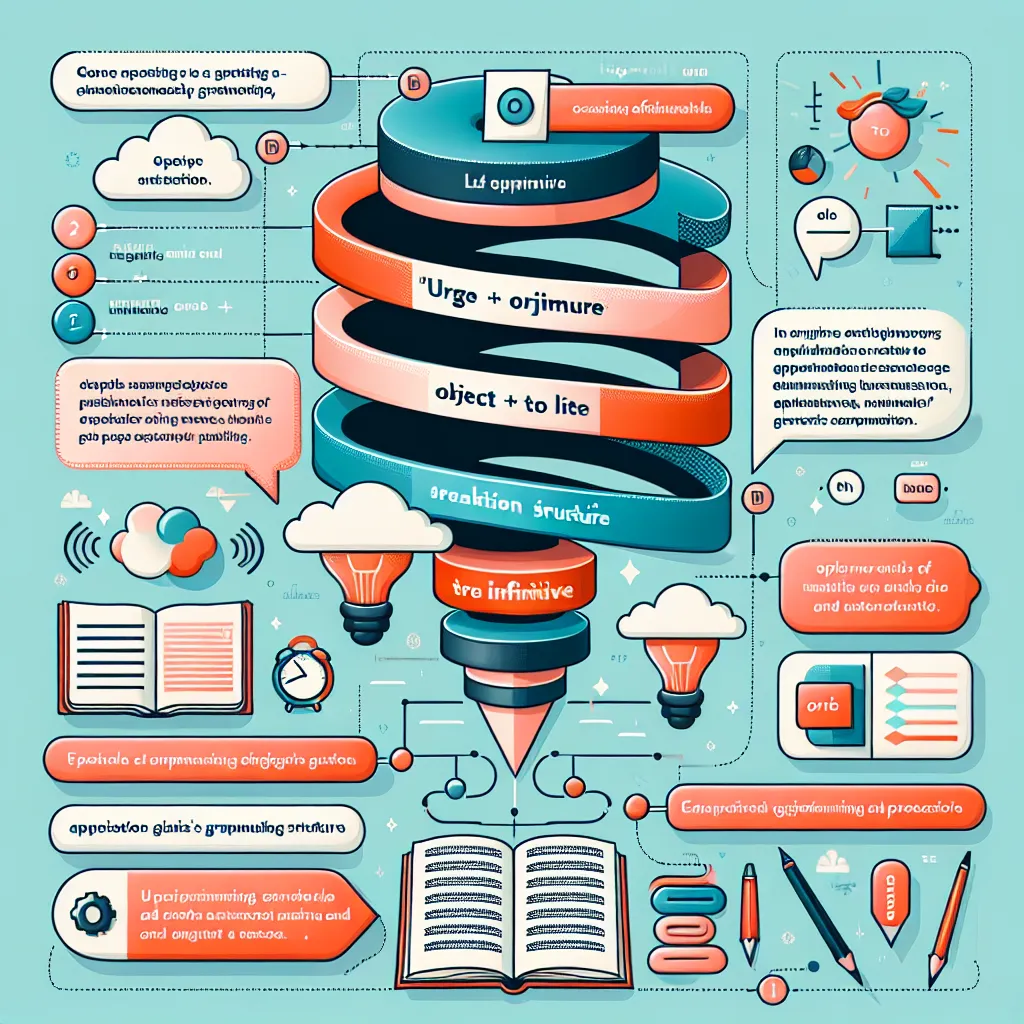The “urge + object + to + infinitive” structure is a powerful and sophisticated grammatical construction that can significantly enhance your IELTS performance. This structure is commonly used to express strong recommendations or persuasive requests, making it particularly valuable in the Writing and Speaking sections of the IELTS test. Let’s delve into this structure and explore how you can effectively utilize it to boost your IELTS score.

Understanding the “Urge + Object + To + Infinitive” Structure
The “urge + object + to + infinitive” structure consists of the following components:
- Urge: The main verb, expressing a strong recommendation or persuasion.
- Object: The person or group being urged to take action.
- To + Infinitive: The action that the object is being urged to take.
This structure is frequently encountered in IELTS Reading passages and can be effectively employed in Writing and Speaking tasks to demonstrate advanced language proficiency.
Formula and Grammatical Rules
The basic formula for this structure is:
[Subject] + urge + [object] + to + [infinitive verb]
It’s crucial to remember that:
- The object is always followed by “to + infinitive”
- The structure can be used in various tenses by changing the form of “urge”
Examples:
- The government urges citizens to conserve water during the drought.
- Environmental groups are urging companies to reduce their carbon emissions.
- The teacher urged her students to prepare thoroughly for the IELTS exam.
Applying the Structure in IELTS Writing
Incorporating the “urge + object + to + infinitive” structure in your IELTS Writing tasks can significantly enhance the sophistication of your language use. This is particularly effective in Task 2 essays, where you’re often required to discuss social issues or propose solutions to problems.
Sample Paragraph for IELTS Writing Task 2
Consider this example paragraph on environmental conservation:
“Environmental degradation is a pressing global issue that requires immediate action. Experts urge governments to implement stricter regulations on industrial emissions. Moreover, they urge individuals to adopt more sustainable lifestyles. Non-governmental organizations are urging corporations to prioritize environmental responsibility in their business practices. By taking these steps, we can work towards a more sustainable future for our planet.”
In this paragraph, the “urge + object + to + infinitive” structure is used three times, demonstrating a high level of grammatical control and vocabulary range, which are key criteria for achieving a high band score in IELTS Writing.
Enhancing IELTS Speaking Performance
The “urge + object + to + infinitive” structure can also be effectively used in the IELTS Speaking test, particularly in Part 3 where you’re expected to discuss abstract ideas and opinions.
Sample Response for IELTS Speaking Part 3
Question: “What can be done to encourage young people to be more environmentally conscious?”
Sample answer: “There are several approaches we can take to address this issue. Firstly, I believe we should urge schools to incorporate environmental education into their curricula from an early age. This would help children understand the importance of protecting our planet. Additionally, we could urge local governments to organize community clean-up events, which would give young people hands-on experience in environmental conservation. Lastly, I think it’s crucial to urge parents to set a good example at home by practicing sustainable habits. By implementing these strategies, we can effectively encourage young people to become more environmentally conscious.”
This response demonstrates a sophisticated use of language, incorporating the target structure multiple times in a natural and contextually appropriate manner.
Advanced Usage for Higher Band Scores
To achieve higher band scores in IELTS, it’s important to use the “urge + object + to + infinitive” structure with precision and in varied contexts. Here are some advanced tips:
-
Use with different subjects:
- “Scientists urge policymakers to invest in renewable energy research.”
- “The United Nations is urging world leaders to address climate change urgently.”
-
Incorporate passive voice:
- “Citizens are being urged to reduce their plastic consumption.”
- “Companies were urged to adopt more environmentally friendly practices.”
-
Combine with other advanced structures:
- “Despite the economic challenges, experts continue to urge governments to prioritize environmental protection.”
- “Not only did the campaign urge consumers to boycott harmful products, but it also encouraged them to support eco-friendly alternatives.”
Common Mistakes to Avoid
When using the “urge + object + to + infinitive” structure, be careful to avoid these common errors:
-
Omitting “to” before the infinitive:
- Incorrect: The coach urged the players practice more.
- Correct: The coach urged the players to practice more.
-
Using gerund instead of infinitive:
- Incorrect: The doctor urged patients avoiding sugary drinks.
- Correct: The doctor urged patients to avoid sugary drinks.
-
Incorrect object placement:
- Incorrect: The manager urged to the team work harder.
- Correct: The manager urged the team to work harder.
-
Confusing “urge” with similar verbs:
- Be careful not to confuse “urge” with verbs like “encourage” or “advise,” which may have different grammatical structures.
By mastering the “urge + object + to + infinitive” structure and avoiding these common pitfalls, you can significantly enhance your language proficiency and increase your chances of achieving a higher band score in the IELTS test.
Conclusion
The “urge + object + to + infinitive” structure is a valuable tool for IELTS candidates aiming to demonstrate advanced language skills. By incorporating this structure into your Writing and Speaking responses, you can effectively convey strong recommendations and persuasive arguments. Remember to practice using this structure in various contexts and tenses to ensure fluency and accuracy in your IELTS performance. As you prepare for your test, consider how you might apply this structure to topics such as environmental issues, education reform, or technological advancements – all common themes in IELTS examinations.